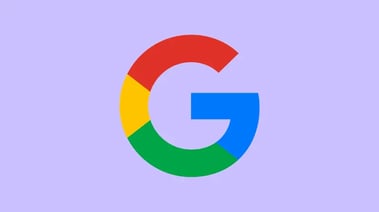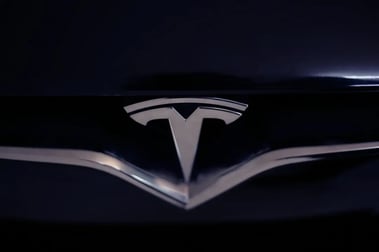When it comes to innovation, failure can be a lot more instructive than success.
We’re always here to celebrate the market leaders who have changed the world with great products and services. At the same time, it’s important not to forget the noteworthy product flops out there, because you can learn a lot from them.
In this article, we’ll take you on a tour through 35 of the world’s most noteworthy innovation failures. We’ll explain where the responsible companies went wrong, and how you can avoid making the same mistakes.
Whether you’re talking about major missteps with new products (think New Coke), or examples where companies misjudged the market (for example, Sony’s blunder with the Betamax), these examples have plenty to teach you. All you need to do is learn from them.
We’ll break these failures down into different industries, including computing, health & pharmaceuticals, automotive, consumer electronics, food & beverage, lifestyle, and consumer goods. From dodgy blood testing to ill-fated perfumes, we’ve got it all.
Why study innovation failure?
At this point, you may be wondering why we’re focusing on the negative stuff.
After all, with so many stories of innovation success out there, why focus on companies that have got things so very wrong?
The fact is, for every innovation leader out there like Google, Microsoft, or Amazon, there are hundreds of competitors that never quite make it out of the gate. For growing startups looking to establish themselves, it’s always helpful to try and understand why this happens.
And innovation failure isn’t something that only happens to small companies, either: even market leaders like Coca-Cola, Samsung, and Nintendo can still have plenty of bad days. Don’t believe us? Just check out the sad history of the Virtual Boy.
That’s why it’s so important to study the examples of where other companies have got things wrong. If you can understand where they went sideways, you’ll have a better chance of avoiding the same fate with your next great product.
35 of the world’s most educational innovation failures
Now, let’s take a look at some of the most instructive examples of innovation failure out there, broken down into the following categories:
- Consumer electronics
- Health & pharmaceuticals
- Automotive
- Food & beverage
- Computing
- Lifestyle products
- Lightning round!
Consumer electronics innovation failures
Things move quickly when it comes to consumer electronics, and not always in the right direction. Unfortunately, not every innovative gadget is destined to be popular.
Let’s get started with one of the strangest examples of innovation failure: Nintendo’s Virtual Boy.
1. The Nintendo Virtual Boy
Marketed as a virtual reality gaming console, in fact the Virtual Boy was nothing close to an actual virtual reality system.
Instead, it was a clunky, unresponsive, and overpriced piece of gaming hardware. Even worse, it featured an operating system that left users scratching their heads in frustration, not to mention a limited set of games for consumers.
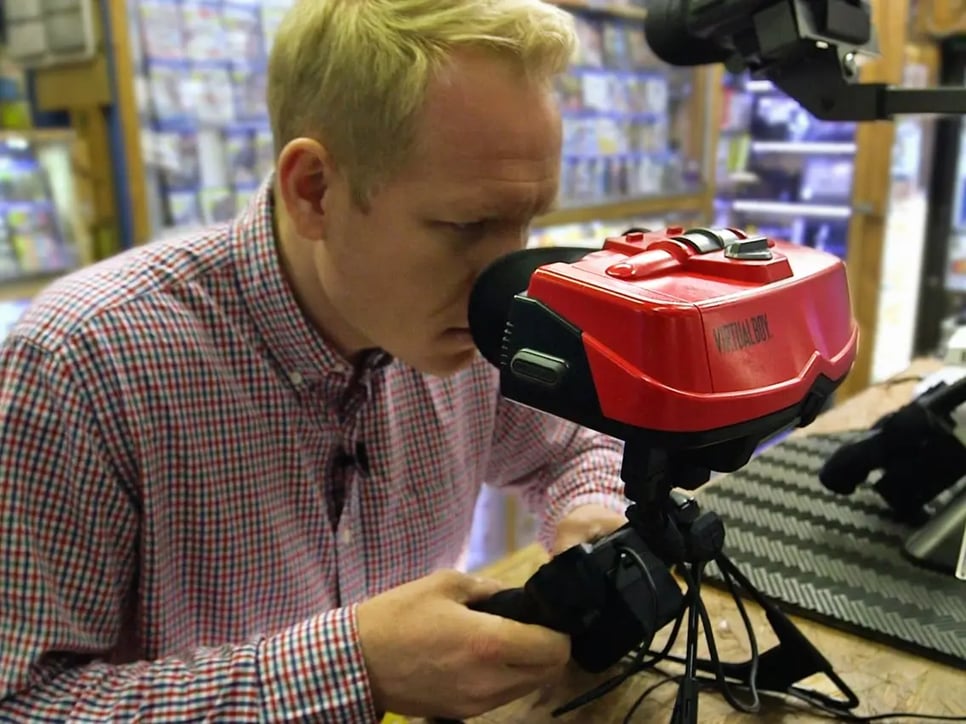 The Virtual Boy was a bulky and confusing flop for Nintendo. Source: Business Insider
The Virtual Boy was a bulky and confusing flop for Nintendo. Source: Business InsiderOn a more serious note, the Virtual Boy was also rumoured to have caused back problems for some users, as well as risking giving people impaired vision. Yikes!
This is a great example of an innovation being pushed to market before the technology was truly ready, and without enough attention being paid to user testing. In Nintendo had taken the time to iron out some of these issues, it could have had a winner on its hands.
2. The Microsoft Zune
Ah, the Zune. Even though Microsoft spent a lot of time and effort pushing its personal MP3 player, it simply never took off, and was eventually discontinued in 2015 after years of valiant marketing efforts.
This is less of an example of a bad product leading to an innovation fail, but more of a case of a perfectly fine product being utterly dominated by a market competitor: the iPod.
The Zune is a great reminder that sometimes, timing is everything: if Microsoft had tried pitching this product just a few years earlier, it wouldn’t have had the iPod to contend with, and may have found an audience for this product.
3. The Sony Betamax
The 70s were an exciting time, especially when it came to consumer electronics. For the first time, people at home were able to record broadcast television to watch later, and two companies were vying to capture the market: JVC with VHS, and Sony with Betamax.
Unfortunately for Sony, JVC’s product was lighter (29 pounds vs. 36 pounds), had a longer recording capacity, and was cheaper. JVC also moved early to secure agreements with outfits offering rental movie cassettes, meaning VHS machines soon became much more popular.
For innovators, this is an instructive example of two similar products going head to head in the market. In this case, JVC won out mostly because of commercial factors beyond the design of their machine. This is why it’s so important to monitor the competition as closely as you can.
4. The Apple Newton
The Apple Newton is another example of poor timing for a product. With it’s touch-screen capability and portable design, a lot of the core ideas included in the Newton eventually found a home in the iPad - but not until a decade after the Newton was retired.
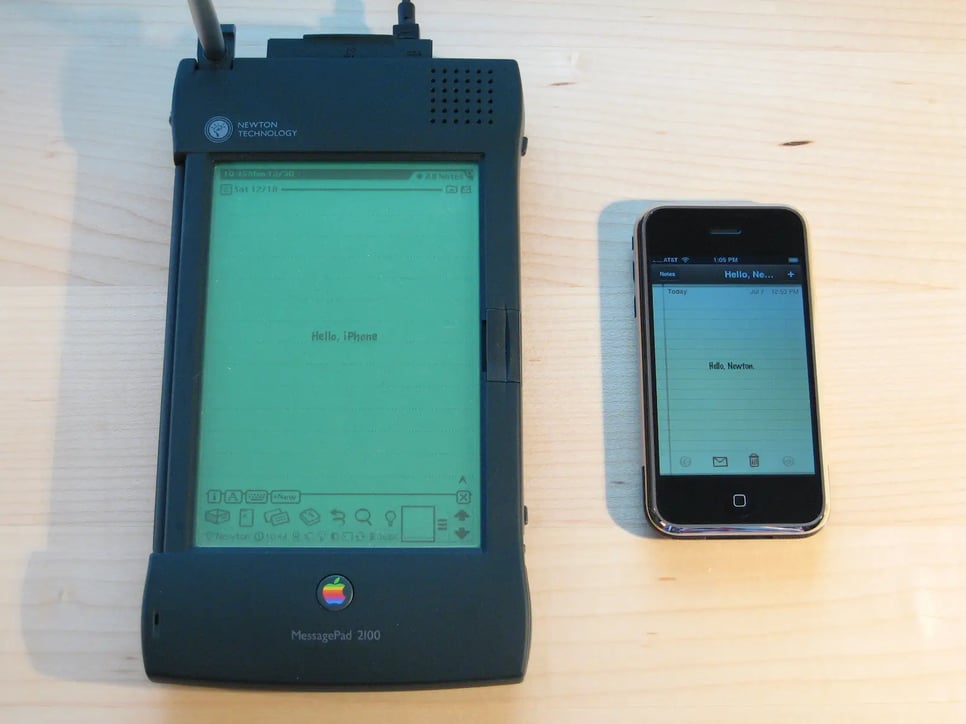 The Apple Newton, and its more popular descendant, the iPhone. Source: Wikipedia
The Apple Newton, and its more popular descendant, the iPhone. Source: WikipediaAnother problem hampering the Newton? It’s price. Consumers just weren’t willing to shell out for something halfway between a PC and an electronic organizer in 1993. Not yet, anyway.
5. The Blackberry Storm
As useful as Blackberry’s products are, the company has spent most of its life being overshadowed by the iPhone. Despite its handy keypad and email connectivity, the Blackberry has been pretty much swamped by Apple’s world-dominating products.
With the Storm, though, Blackberry really got things wrong. This phone is now recognized as probably the worst smartphone ever released, and for good reason: it’s interface was nearly impossible to use, it had connectivity issues, and it was too expensive for the market at the time.
This is another great example of why companies should take the time to fine-tune products!
Health and pharmaceutical innovation failures
In the health and pharmaceutical industry, innovations can be potentially life-changing for millions of people around the world.
Unfortunately, the drive to change lives and turn a healthy profit can sometimes lead to companies pushing products to the market before they’re ready.
6. Theranos
Theranos, the one-time unicorn startup offering seemingly world-changing blood diagnostic technology, is one of the best examples of dangerous medical innovation fails. Once valued at an eye-watering $9 billion US, the company went belly-up in a 2016 fraud scandal.
Despite having some famous backers and a lot of Silicon Valley hype, Theranos was apparently manipulating its lab results to appear more lucrative for investors. Even worse, it was pushing its products to market before they showed any signs of being actually workable.
 Elizabeth Holmes, founder and CEO of the now defunct Theranos. Source: The Verge
Elizabeth Holmes, founder and CEO of the now defunct Theranos. Source: The VergeThe founder and CEO of Theranos, Elizabeth Holmes, will stand trial for fraud in 2020 for her role in deceiving investors, and for misrepresenting the company’s technology to the public.
The Theranos scandal is a potent reminder of the need for transparency and accountability in innovation. It’s also an example of corporate innovation culture gone horribly wrong.
7. Zeo
A little less life-threatening than Theranos’s fraudulent blood-testing technology, sleep monitoring technology startup Zeo is another example of an innovation failure in the health sector.
A once-promising company, Zeo seemed to fail for a reason common to a lot of other health startups: rushing products to market before they were ready, and not taking the time to understand the needs of users and patients.
Alongside Theranos, the Zeo example illustrates the importance of cutting through the hype and the glossy marketing, and making sure the technology at the heart of innovation is sound.
8. Merck’s Vioxx Drug
Whenever new drugs are released to the market, there’s a risk of unforeseen circumstances. Unfortunately, for companies eager to make their mark with investors and patients, sometimes innovators push their products out before the long-term effects are known.
In the case of Vioxx, this was certainly the case. This drug was on the market for years, though it was eventually shown to contribute to an increased risk of cardiovascular events such as strokes and heart attacks.
As far as innovation fails go, this one was costly: eventually, Merck settled for $4.85 billion in damages with users of the drug. This is another example of why innovators need to take the time to understand the full implications of their innovations - especially where lives are at stake.
9. Metal-on-metal hip implants
This innovation isn’t the responsibility of a single company. Still, metal-on-metal hip implants but remains one of the most troublesome medical advances of recent decades.
Hip replacement technology is always progressing in terms of effectiveness and long-term patient benefit, and many patients have had successes with metal-on-metal implants. However, many countries have authored studies examining the adverse effects of this technology.
This example shows the stakes with medical innovation: when hundreds of thousands of patients rely on technology, companies need to constantly assess whether it remains safe.
10. Opioid painkillers
This is a big one. As far as innovation fails go, the production and systematic overprescription of opioid painkillers around the world - particularly in the United States - has caused an almost incalculable amount of damage and human suffering.
While opioid painkillers have made life easier for a lot of patients dealing with chronic pain, the overreliance on these drugs, and the subsequent opioid crisis, makes this innovation one of the most harmful in the history of the world.
In short, this is a good lesson for governments and companies everywhere. Before a product is released to the market, the long-term effects should be rigorously studied, and the results made available for consumers, policymakers, and medical professionals.
Automotive innovation failures
The automotive industry is another high-stakes area of innovation.
While advances in automotive technology and design have the potential to serve and delight millions of drivers out there, these products can also have a deadly impact on consumers if things go wrong.
11. The Ford Pinto
The Ford Pinto is the automotive innovation fail so famous, it even has its own podcast.
Despite boasting an iconic design and an affordable price tag, Ford failed to take crucial steps to strengthen the Pinto’s fuel tank. This meant even a low-velocity impact would rupture the fuel tank and risk making the car explode. Obviously, that’s not great.
After many reported incidents with the Pinto between 1973 and 1978, Ford subsequently recalled 1.5 million models of the car. This makes the Pinto a costly - and dangerous - reminder of the importance of getting every detail right when it comes to innovation.
12. The DeLorean DMC-12
Of all the innovation failures in this list, the DeLorean DMC-12 is undoubtedly the coolest.

The DeLorean DMC-12: a very handsome failure. Source: Bored Panda
However, despite looking swish, the DMC-12 never really found a home with car enthusiasts. Slow sales, combined with a costly manufacturing process due to the car’s complicated design, all combined to push DeLorean to bankruptcy.
The DeLorean DMC-12 fiasco wasn’t just a question of costly manufacturing, either. It’s also a great example of how a patchy approach to marketing can sink an otherwise iconic product.
13. The Ford Edsel
It might seem a little harsh to include two entries for Ford in this list, but trust us: the Edsel was an automotive failure of such amazing scale, it justifies being in here.
Don’t believe us? Even Bill Gates looks to the example of the Edsel as a reminder of how innovation can go so wrong - even for market leaders.
Ford developed the Edsel in a way that was inconsistent and costly. Rather than being guided by research, reports suggest the company gave product development executives too much latitude with the Edsel, and rushed development without getting the basics right first.
Not only was the Edsel a massive flop - it was an expensive flop, costing Ford hundreds of millions in product development. As this example shows, even a company that has given the world so many great products can still get things wrong in a big way.
14. The Tata Nano
Designed specifically to appeal to the local Indian market, the Tata Nano was marketed as an affordable, no-frills product, and retailed for an amazingly cheap $2,500 US.
Unfortunately, the extremely low price of this product was only made possible by cutting corners in the manufacturing process. This made the Nano dangerous to drive, with reports of some models spontaneously bursting into flames.
Alongside the Pinto, the Tata Nano is a great example of why some products are just too important to take shortcuts during the manufacturing process.
15. The Reliant Robin
Any fan of Mr. Bean will know this one.
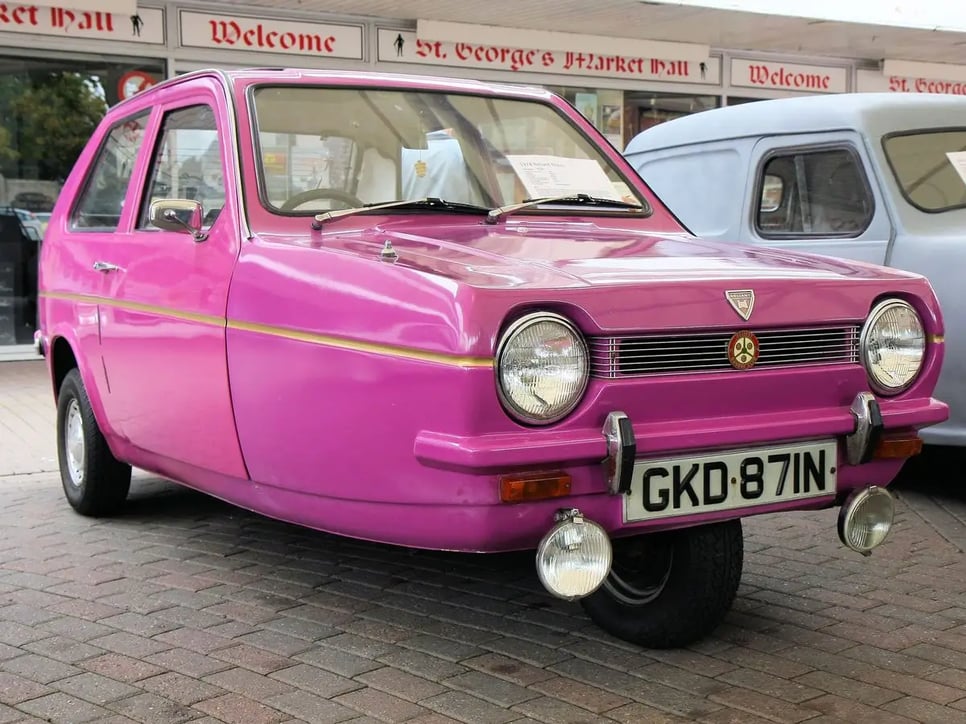
The Reliant Robin - a fun and colourful example of automotive failure. Source: Birmingham Mail
A great example of an idea that probably should have stayed on the whiteboard, these famous three-wheeled cars have become something of a collector’s item: loved by a dedicated few, but also subject to widespread ridicule.
In fact, the Reliant Robin is anything but reliant. Not only are they known to roll over at the drop of a hat, but they’re also prone to breakdowns. It’s no wonder they wear the dubious crown of the worst British car of all time.
Food & beverage innovation failures
People are always looking for the next big thing in food and drink. While this can lead to a lot of much-loved innovations, it can also cause companies to release some real head-scratchers.
16. New Coke
No list of innovation fails would be complete without New Coke.
Of all the failed products in this list, New Coke is the most emblematic. It has come to be used as shorthand for an established company losing its way and trying to give its customer base something nobody asked for.
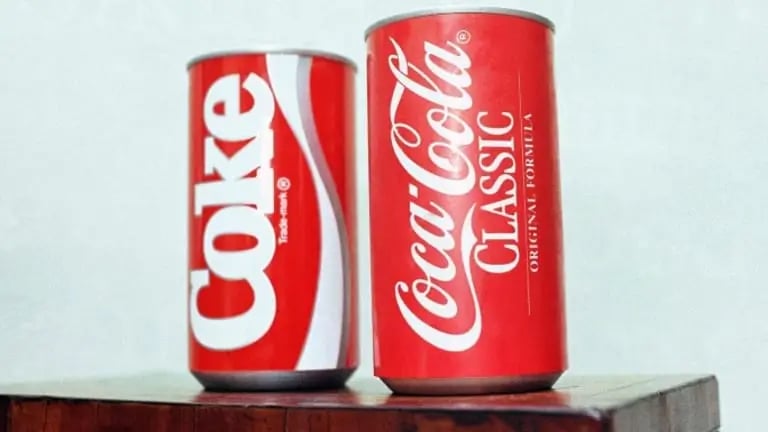
Source: History
This is a great example of why companies should be careful when messing with an already popular product. New Coke was the company’s attempt to tweak the classic recipe, making an already sweet soda even sweeter.
Thankfully, the New Coke fiasco was short-lived: just 77 days after its release in 1985, the company bought back the old formula under the guise of Classic Coke.
17. Guinness Light
Alongside New Coke, Guinness Light is another important chapter illustrating the perils of too much experimentation with an established product. Sometimes, you just shouldn’t mess with a good thing.
Following the company’s decision to release this muted version of its classic stout, sales were subdued. While the beer itself was perfectly drinkable, no amount of marketing could dig the company out of the hole it had created by diluting the established brand name.
Guinness Light represents a key lesson for innovators everywhere: understand what your customers want, and what they don’t want.
18. Colgate Lasagne
This innovation fail is almost too weird to be believed.
As a leading name in toothpaste and dental hygiene, Colgate had the bright idea in the 1980s of introducing a line of frozen meals to go alongside its existing range of products.
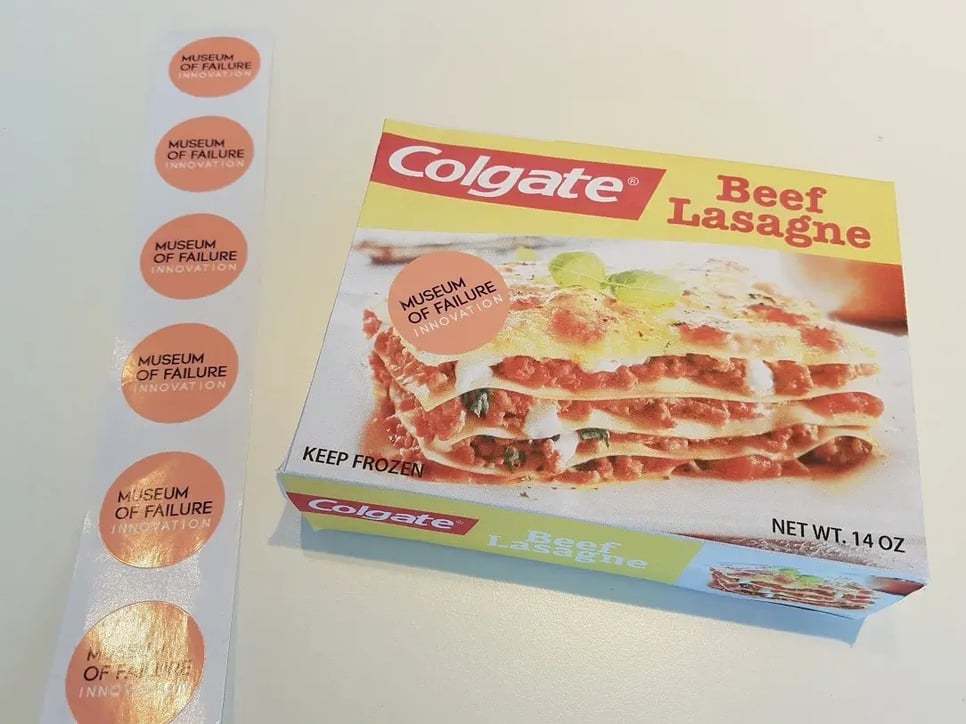
Colgate lasagne, anyone? Source: Food Dive
Their thinking seemed to be as follows: If customers already know Colgate as a great name in toothpaste, why not convert this name recognition into frozen foods, like lasagne?
Unfortunately, people couldn’t get past the close association of the Colgate name with minty, refreshing toothpaste. Needless to say, the line really didn’t take off, and Colgate decided to stick to what it does well.
19. The McDonald’s McDLT
In the list of fast food fails, the McDLT is a solid entry - but for a unique reason.
While the burger itself was well-received by consumers, the extraordinarily wasteful packaging didn’t go down very well at all. By splitting the burger into two separate polystyrene packages, McDonald’s aimed to, as they said, “keep the hot side hot, and the cool side cool”.
Unfortunately, the whole thing was just a confusing mess of bulky and unnecessary packaging, and is now seen as a symbol of the excesses of 80s commercialism.
As this example shows, sometimes an innovation can be sunk from an unexpected angle.
20. Life Savers Soda
Have you ever been eating candy and wondered why no-one had made it available in liquid form? No? Neither have we.
Life Savers, however, thought they might be onto something by turning their classic multicoloured candy into a soda in the 1980s. With an established brand presence and a highly recognizable packaging design, surely they’d be onto something, right?
Unfortunately for the company, customers through it was simply too sweet and sickening. Fortunately for dentists everywhere, the company ditched the product shortly after its release.
Just like the examples of Guinness Light and Colgate, Life Savers Soda offers a valuable lesson for innovators everywhere: an established brand name won’t justify an unnecessary product.
Computing innovation failures
As with personal electronics, computing is always an exciting area when it comes to advances in innovation. New technology seems to roll into the market at an amazing pace, giving us plenty of examples to look at.
Unfortunately, not every computing innovation is destined to change the world.
21. IBM’s mishandling of the PC market
This one doesn’t count as a specific product failure, necessarily, but it is very instructive for businesses in all sectors.
In the 1980s, IBM missed out on a huge opportunity to take advantage of the emerging market for personal computers. It had the technology, the production capability, and the industry presence to be able to tie up the market for decades - if it only had seen the potential.
As subsequent decades have shown, this missed opportunity hasn’t stopped IBM from performing well. However, with more of an effort to step into the PC market, IBM could have been a true titan of the technology sector.
This is a great example for companies of the perils of inaction. Sometimes, a missed opportunity can be heartbreaking!
22. Google Glass
This is one we could easily include under the ‘consumer electronics’ category, but really Google Glass goes beyond simple consumer electronics.
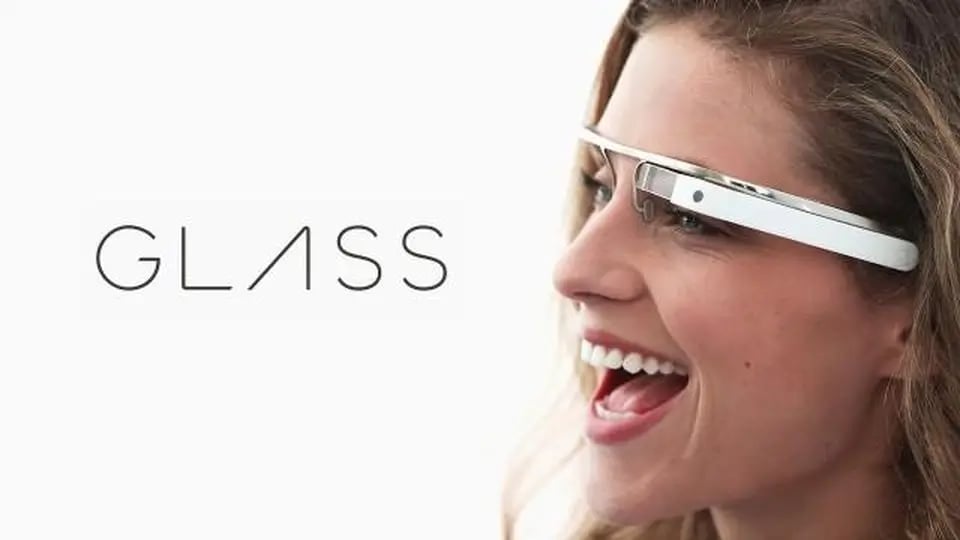
Source: Forbes
Despite having some potentially cutting-edge features like hands-free web navigation and live map imaging, Google Glass simply never took off.
This is one of the best examples of products being doomed to failure by their high price. Even the most hard-core tech fans were hesitant to shell out $1,500 US for a gadget, meaning Google Glass never had much of a chance of getting out of the gate.
However, the Google Glass saga may not be over yet - there are signs Google may be bringing out a new version of the technology.
23. Apple iTunes
This is a rare example of a product failure that still managed to be used the world around, despite being fundamentally flawed.
Simply because it came preloaded into Mac operating systems, iTunes was one of the most widely-used media players in the market. However, this didn’t stop it from being a pain to navigate, and making it hard for users to organize their content between devices.
Now that it has been phased out, we can all take a look back and wonder what iTunes could have been with the right focus on usability and a clean, intuitive interface.
24. The Xybernaut Poma
By this stage in the list, chances are you’re ready for a little humour. Well, get ready to laugh, because we’re about to discuss the Xybernaut Poma.
This early wearable computer looks straight out of some techno-dystopian movie. Part Robocop, part Johnny-5, and part fever dream, the Poma is one of the most amazingly awkward innovations we’ve ever seen.
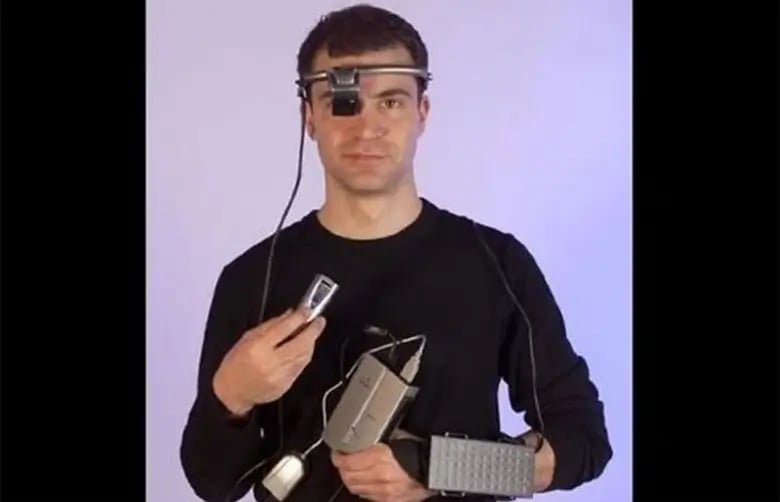
The Xybernaut Poma in action. Source: Cult of Mac
Though it was cutting edge in 2002, and actually seemed to anticipate a lot of features of later mobile devices, simply wearing the Poma made the user look a lot like an extra in an 80s movie.
Unsurprisingly, this wonderfully weird piece of hardware never really took off - at least not in this dimension. Still, it’s a great reminder of a key rule in innovation: try not to make the user look ridiculous.
25. The Osborne Executive
Weighing in at 28 pounds, this early “portable” computer was launched in 1982, for the hefty price of $2,500 US. While it featured some impressive functionality for its time, the Executive was simply too heavy to lug around, and too pricey to find a foothold in the market.
It was also hideously expensive for the company to manufacture, which made it something of a liability for Osborne. Unfortunately, the company went into bankruptcy after the Executive had only been on the market for a little over a year.
As with Google Glass and countless other examples, the Osborne Executive proves that no matter how useful an innovation is, if it’s too expensive, it’ll have a tough time finding a fan base.
Lifestyle product innovation failures
Lifestyle products are a curious beast. Most of the time, people in the market for non-essential items don’t know what they want until someone offers it to them.
From wearable medical technology to yoga pants and facial toners, we’ve got a great selection of lifestyle innovation fails for you to check out.
26. The Jawbone UP3
The emergence of the wearable technology market is something a lot of companies are still trying to figure out. By offering a mixture of fitness technology with medical diagnostic capability, wearable electronics still have a lot of potential to find a user base.
However, the existing products on the market, like the Jawbone UP3, seem to be a little too expensive for people. Even though it offers a bunch of impressive sensory technology, like heartbeat analysis and blood pressure, it seems the marketing isn’t quite right yet.
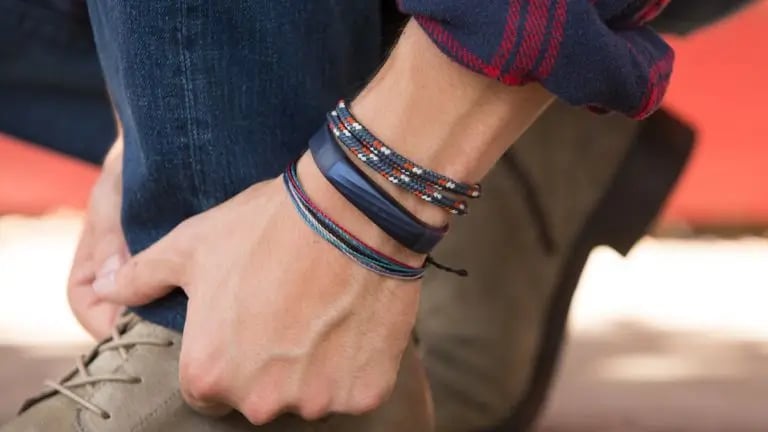
The Jawbone UP3. Source: T3
As reviews suggest, people don’t quite know what to make of the UP3. This illustrates another great innovation rule: before you release a product, you should know how to explain it to people!
27. Evian’s Water Bra
We’re not kidding - this was a real thing.
The Evian Water Bra was a crossover between apparel and a drinks product, designed to keep its users cool and hydrated at the same time. Sound a little strange? That’s because it is.
As you can probably guess, this wasn’t exactly a big hit with consumers. Following disbelief and ridicule from customers, the Water Bra was swiftly discontinued.
There are lessons aplenty when it comes to the Water Bra, but really it all boils down to this: there are some crossover products that simply shouldn’t exist.
28. Lululemon Astro Pants
You’d think yoga pants would be a fairly simple concept to get right. Comfortable, durable fabric, and a stylish design - that’s all you need, right?
Well, with the Astro Pants, Lululemon managed to put a product on the market that was a little more revealing than its wearers expected. Too revealing, as it turned out. We don’t need to go into detail here - you can probably imagine what happened.
The Astro Pants aren’t just a good example of an avoidable product failure - they’re also a great example of how not to offer a public response in advance of a product recall. Lululemon admitted the pants were defective, but still charged $92 US for all remaining stock.
29. The Face Trainer
Some people aren’t content just to work on agility, flexibility, or core strength - they also want to tone their face. Enter the Face Trainer.
Billed as a great way to strengthen the muscles in the face, the Face Trainer just looks strange. As with the Water Bra, this is another product that’s impossible to wear without looking a bit silly.

The Face Trainer. Source: Generation Iron
Fortunately, the Face Trainer offers a handy lesson for brands everywhere: sometimes, there’s a good reason an innovation doesn’t exist yet. Either it’s ridiculous, or it’s unnecessary, or both.
30. Ponds Toothpaste
And now, one last example of why a brand should stick to what it does well.
Already an established name in face cream, Ponds decided to try launching a toothpaste, too.
Unfortunately, consumers simply couldn’t get past the idea of a face cream company putting out a toothpaste. Even worse, they couldn’t differentiate the Pond’s toothpaste from Colgate’s, meaning the market was unlikely to find a home for this new product.
Lightning round!
And now, let’s finish with a few wild cards.
These new five innovation failures don’t fit neatly into any specific category, but boy are they fascinating.
31. RJ Reynolds Smokeless Cigarettes
Of all the failures in this list, this might be one of the most expensive - and the least necessary.
In the 1980s, tobacco giant RJ Reynolds spent $325 million developing the ‘Premier’, an apparently smokeless cigarette designed to heat tobacco rather than burning it.
Leaving aside the questionable physics of the whole exercise, the Premier also left a charcoal taste in some smokers’ mouths. Unsurprisingly, it was pulled from the market in the early 1990s, though the company still continued to tinker with the technology.
32. The Juicero
This innovation is a great example of why investors and developers need to look through the hype and understand the basic technology behind a new product.
Billed as a gourmet juice system, the Juicero looked more like an Apple product that a classic juicer. It was designed to be matched with a smartphone, and included a significant focus on customization according to individual tastes and nutrition needs.
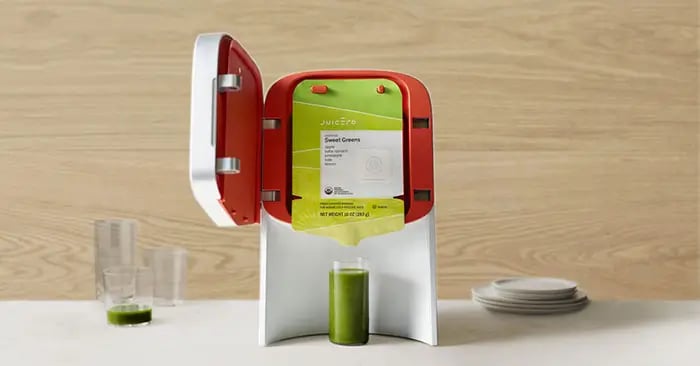
The Juicero. Source: Bored Panda
The system had a lot of support from investors, who poured in over $134 million US. Unfortunately, as soon became apparent, customers could simply order the juice packets and squeeze them into a glass, making the whole expensive contraption completely redundant.
33. Bic’s ‘For Her’ range
Some product launches simply make you shake your head and wonder what on earth was going through the heads of those responsible. Bic’s ‘For Her’ range fits nicely into that category.
If there’s one thing that can be used with equal ease and comfort by pretty much any demographic category on earth, it’s the ballpoint pen. And yet, the company took a stab at rolling out a pen aimed specifically at women.
Needless to say, the ‘For Her’ range wasn’t exactly met with open arms. On the bright side, at least the world got a few laughs out of the whole thing.
34. Harley Davidson perfume
This might be the best example of a product extension nobody asked for.
In 1994, Harley Davidson, the much-loved motorcycle brand, released a line of eau-de-toilette. On one level, it makes sense: the company makes t-shirts and jackets as well as motorcycles, so why not branch out into perfume too?
As it turned out, this kind of product diversification only makes sense up to a point. As you’d expect, the Harley Davidson scent wasn’t exactly a hit, and was discontinued in the late 90s.
35. Atari’s E.T. video game
We thought we’d round off this list with an example of just how high the stakes are when it comes to innovation: Atari’s E.T. video game.
Atari spent a lot of money to secure the rights to release an E.T. game following the smash-hit movie. $20 million US, to be precise.
Unfortunately, the game was developed in such a rush that it was almost unplayable. Early negative reviews from gamers and critics led to a panic for Atari, which offered the game at a hefty discount - all to no avail.

The sad fate of the Atari E.T. game. Source: Bored Panda
As a result, 2.5 million of the 4 million cartridges produced ended up in a landfill - a sad end, even for something described as ‘the worst video game ever made’. Even worse, the whole debacle placed Atari in serious financial peril.
This is a great reminder of the stakes with innovation. Get things wrong, and your beloved innovation could end up in a trash heap.
So, what can you learn from these failures?
As fun as it can be to point to these case studies in failure, there’s a deeper purpose when it comes to studying these famously expensive - and sometimes embarrassing - flops.
Inside each of these 35 stories, there are some common lessons for innovators to keep in mind:
- Customer need is everything: Don’t release a product just because you can. If there’s no market demand for it, it won’t succeed, no matter how nifty or eye-catching it might be. We’re talking to you, Life Savers Soda!
- Be careful with the price tag: Sometimes, a product really is worth a high price tag - just take a look at Apple’s iPhone sales. Other times, as with Google Glass, customers aren’t going to shell out what the company is asking, no matter how functional it is.
- Make sure your product is actually ready for market: This is a big one. As with the Pinto or the Virtual Boy, companies need to iron out all the kinks before you start rolling things off the production line. Otherwise, you could be in for an expensive recall.
- Monitor the competition: Sony’s Betamax failed to find a market simply because JVC was pushing the VHS so hard with video rental outfits. If Sony had been following this more closely, it might have had a shot at outmanoeuvring the competition.
- Always gauge market demand first: Even the coolest, most functional product needs to be designed in accordance with market demand. Otherwise, like the Apple Newton, it’ll wind up being a niche item.
- Understand what makes your existing products great: When a company has a high-performing product (like Coke or Guinness), it’s tempting to assume customers will like a new-and-improved version even more. Most of the time, this is plain wrong.
Don’t just learn from the best - learn what to avoid, too
For companies looking for new ways to innovate, it’s important to focus on all the examples of amazing innovation out there.
However, why stop there? You can also learn a whole lot from the innovation flops, too!
In this article, we’ve taken you on a tour through 35 of the most instructive failures in innovation, from the personal electronics sector, through the food and beverage industry, lifestyle products, and more.
From IBM’s fatal error in failing to understand the personal computing market through to the strange example of the Microsoft Zune, these examples all have valuable lessons to offer companies at any stage.
So, are there any of your favourite product failures that we’ve missed out? Be sure to let us know!


